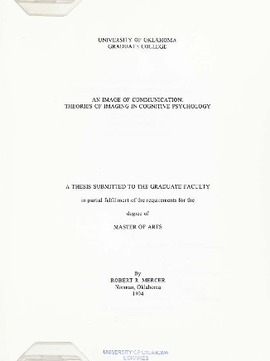| dc.contributor.author | Mercer, Robert R. | |
| dc.date.accessioned | 2020-01-31T18:00:12Z | |
| dc.date.available | 2020-01-31T18:00:12Z | |
| dc.date.created | 1994 | |
| dc.date.issued | 1994 | |
| dc.identifier.uri | https://hdl.handle.net/11244/323457 | |
| dc.description | Thesis (M.A.)--University of Oklahoma, 1994. | |
| dc.description | Includes bibliographical references (leaves 35-36) | |
| dc.description.abstract | In an empirical study, visual breakpoints were created from a motion video presentation. These were then used, along with the original motion video presentation , in a memory test experiment testing for recall of abstract information contained in the presentation narrative. Twenty subjects,
undergraduate psychology students, marked the breakpoints. Next, thirteen subjects viewed a the presentation which contained only the still breakpoint frames. Fourteen students viewed the original, motion video presentation. Each group was given a recall test on the facts in the presentation
narrative immediately after exposure and 48 hours later. TI1e breakpoints were graphed and analyzed for characteristics relevant to the visual media's tradition of the decisive moment. In addition, it was proposed four types of breakpoints could be identified. The memory test yielded no significant
results. The hypothesis, that breakpoint subjects would perform better than motion subjects in a memory test remains unsupported. | |
| dc.format.extent | vi, 58 leaves | |
| dc.format.medium | vi, 58 leaves ; 29 cm. | |
| dc.language.iso | eng | |
| dc.subject.lcsh | Visual communication | |
| dc.subject.lcsh | Imagery (Psychology) | |
| dc.subject.lcsh | Recollection (Psychology) | |
| dc.title | An image of communication: theories of imaging in cognitive psychology | |
| dc.type | Text | |
| dc.contributor.committeeMember | Richard Reardon | |
| dc.contributor.committeeMember | Linda Morton | |
| dc.contributor.committeeMember | Bruce Hinson | |
| ou.group | School of Journalism and Mass Communication | |
